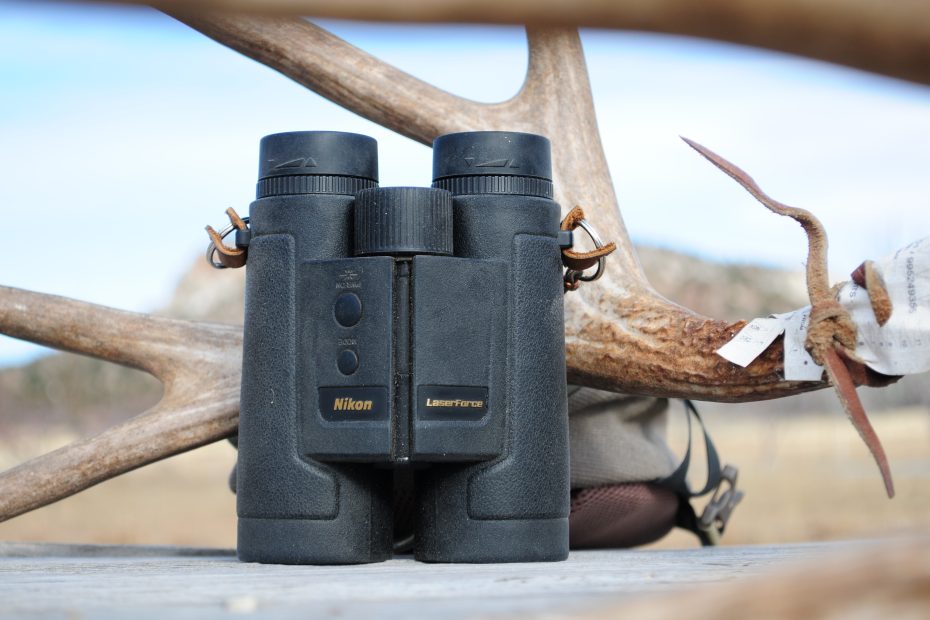I still remember the moment. A package arrived at my remote home amidst the rough, high-elevation mule deer and elk habitat of my youth, dropped casually on the porch by the United Parcel Service driver. We lifted it, my brother and I, to a place of honor on the kitchen table, and carefully removed the contents from the packaging. Dashing to the back porch we pointed the new marvel at a distant hillside and exclaimed with glee at the result. It was the first laser rangefinder we owned, and it changed our hunting and shooting lives.

HISTORY
Now, I’m not an old man, but I’m not young either, and I remember the days when rangefinders consisted of a unit with a dial that you turned until the stigmatized image inside became clear – two images merged into one. They worked, but were crude at best compared to today’s hi-tech range-finding instruments.
The most important tool of today’s era of long-range precision shooting is the laser rangefinder. Not the ballistic-turret-topped riflescope, not the ultra-streamlined projectiles, not the precision rifles. They all play a part, but as the quarterback in a football game calls the plays, the laser rangefinder calls the shots. Without it the game is changed; the other players left as a team without a quarterback.

A PROGRESSION…
Over time rangefinders improved; became more compact, more versatile, more reliable, and more capable. Then, the next big step in the rangefinder-revolution happened: a combination binocular and rangefinder. Now a shooter or hunter could combine two of his most important pieces of equipment into one, rendering him faster, more efficient, and more competitive/deadly. But there was a problem. The new bino/rangefinder units cost about as much as a good used sedan, and not many shooters or hunters could afford them.
So when I saw Nikon’s new LaserForce rangefinding binocular at the SHOT show in Las Vegas last January, I was immediately intrigued. Nikon is known for producing (in addition to top-end camera equipment) good, affordable riflescopes, binoculars, and rangefinders. This bino/rangefinder would hit the streets at about a thousand bucks. I requested one for testing on the spot.
It took a while for the LaserForce to arrive (I guess I wasn’t the only person excited about them), but it got here in time for me to use it during a fall elk hunt and my wife and daughter’s muzzleloader mule deer hunts. Here’s what I learned:
ERGONOMICS
The first thing I noticed when I scooped the LaserForce out if its factory box was how comfortable it was in my hands. The second was that the ranging button was readily found by feel, even with thin gloves on my hands. It’s not, however, so high as to be accidentally activated.

My next impression was that the LaserForce is surprisingly compact for a rangefinding 10×42 binocular, rendering it quite comfortable to carry. In fact, it is the lightest 10×42 rangefinding bino that I could find on the market.
Then I held the LaserForce up to my bespectacled eyes. Using bino’s or a spotting scope while wearing glasses is a never-ending source of misery for me; it’s never comfortable, and when it’s really cold out, a fellow needs a set of windshield wipers on his glasses to keep the fog off of them. But I digress. Suffice it to say that the Nikon bino/rangefinders are as comfortable as any I’ve ever used with glasses, due to their generous eye relief.

PERFORMANCE
I compared the LaserForce’s optical prowess to several other rangefinding binoculars in a range of conditions from low light to bright sunlight. They performed satisfactorily; and while not as good as units that cost several times as much, they were on or above par for similarly priced units. I tested the rangefinder as well, first formally and then in real-world conditions during mule deer and elk hunts. The laser will indeed range beyond a mile as advertised, under ideal conditions. Like every other rangefinder it looses effectiveness on non-reflective targets, especially during bright light conditions. But it would bounce an accurate reading off almost any object with boring regularity out to around a thousand yards.
I did have some difficulty getting both the barrel-to-barrel focus and the internal display (in the right barrel) focused simultaneously – especially when wearing glasses. The internal display must be focused first by turning the diopter ring on the right barrel. Then you focus the right barrel on a distant subject using the main focus ring. Lastly, focus the left barrel on the same subject using the diopter ring on that side.
NOTABLE FEATURES
The LaserForce is fully water and fog proof, boasts Nikon’s ED (extra-low dispersion) glass, a rubber armored body. Also, it is capable and pleasant in the hand. The laser rangefinder will read from 10 to 1900 yards/meters. It features an easy-to-read display with four brightness settings to adjust for varying light conditions. The ID (incline/decline) technology option provides true ballistic ranges if desired. Best of all, Nikon offers a No-Fault Repair/Replacement policy that covers almost any disaster that could befall your LaserForce.

DOWNSIDES
The truth is I couldn’t find anything real to complain about. The LaserForce is a reasonably priced combination that will do everything that your average hunter or shooter could ask. Sure, a $3,000 version will be better, but it’s also, well, three thousand dollars.
One humorous but temporary issue I found was the unit’s propensity to attract dust and debris. I haven’t experienced that before – this thing gathered dust like a century-old bottle of wine. In the time that passed and it no longer made like a hobo on a dusty two-track. I’ll not even begin to hazard a guess as to what caused it.
The Nikon LaserForce is a solid unit that performs well and is priced right.
For more information about Nikon’s optics, click [track-link url=”https://www.nikonsportoptics.com/en/nikon-products/scopes/index.page” campaign=”NikonOptics” target=”_blank”]here[/track-link].

